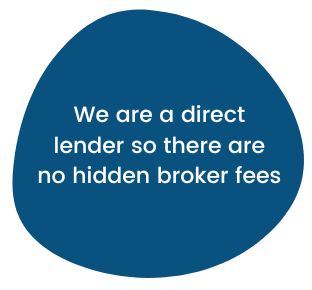
Can I get a holiday let mortgage with a limited company?
Yes, you can get a holiday let mortgage with a limited company. There are various lenders that offer holiday let properties owned by limited companies. However, the process and criteria may differ compared to obtaining a mortgage as an individual.
When applying for a holiday let mortgage with a limited company, lenders typically assess the financial health and creditworthiness of the company. They may consider factors such as the company's income, business plan, and overall financial stability.

Is it better to buy a holiday let property through a limited company or through your personal name?
Whether you decide to buy a holiday let through a limited company or in your personal name depends on your circumstances. Getting a holiday let through a limited company is a popular choice, however it is usually not recommended as the best solution if you are a first time landlord. This arises from the fact that there are a limited number of lenders who are willing to give a limited company holiday let mortgage to first time landlords. Therefore, first time landlords are often left with a smaller selection of lenders to choose from and often have to pay more interest on their mortgage payments.
Why would you want to purchase a holiday let with a limited company?
Purchasing a holiday let property through a limited company can offer several advantages, but it's important to consider your specific circumstances and goals before making this decision. Here are some reasons why individuals might choose to buy a holiday let through a limited company:
Tax purposes
Taking out a holiday let mortgage with a limited company means you can be efficient with your tax.
If you want to find out more about the tax that comes with holiday let mortgages, we recommend that you seek expert advice. Alternatively, you can head to the government’s website to find out more information.
Business purposes
You may decide to purchase a holiday let mortgage through a limited company as a way to start a business. It may be that you want to own a number of holiday let properties under one limited company. This may be a good way to start building a property portfolio.
The money you make from one property can be used to purchase your second property, and then the money made from this property can be used to purchase your third property and so on.
If one of your goals as a landlord is to expand your property portfolio, taking out a holiday let mortgage with a limited company may be a good way to do so.

How Mercantile Trust could help
If you are a first time landlord looking to borrow a holiday let mortgage from us, we could help. Our holiday let mortgages start from £10,000 up to £500,000. Therefore, if you are looking to take out a smaller loan, you could do so.
If you are a first time landlord who has poor credit, we could also help with this too. We take a holistic approach when reviewing our applications. Where some lenders say ‘no’ we often say ‘yes’.
At Mercantile Trust, you can stay in your holiday let property for up to 90 days per year. We lend to England, Scotland, Wales and Northern Ireland.
It is easy to apply for a holiday let mortgage. All you need to do is to enquire below, it only takes 30 seconds.
Call our free number on 0800 032 3737 to speak with one of our advisors. You could get a lending decision in just one phone call.
Frequently asked questions
A buy to let mortgage is a finance agreement that allows you to purchase a property in order to rent it to a third party.
A regular residential mortgage does not let you rent the property out, unless you gain the permission of your mortgage lender. Whilst residential lenders may give you permission if you ask for it, there will often be an additional charge to do so.
Buy to let mortgage affordability calculations are assessed on the potential rental income of the property i.e. how much rent can be charged for the house or flat / apartment being purchased. This means that your personal income is less of a factor.
The only exception is if you are a first time buyer, where personal income is assessed, in order to protect those who are new to property investment from over-stretching themselves financially.
Lenders will want to see that applicants do have some form of personal income, but many don’t have a minimum income requirement, so if you have retired and are on pension income, or you are self-employed and have a low income, or your personal income is low for any other reason, you may still be eligible for a buy to let loan.
When you speak to a buy to let mortgage lender direct, the process for getting a buy to let mortgage generally includes similar steps.
First of all, you would speak to a mortgage advisor for the lender, who will discuss how much you want to borrow, how much deposit you have to put down, and the rent you are receiving for the property (if you are remortgaging) or expect to receive (if you are purchasing).
The advisor will also ask you about the property in more detail, your experience in property (e.g. do you own your own home, do you own other properties), your financial situation and credit history.
This information helps a lender advisor assess whether you are a match with their criteria. Lenders build a picture of the type of property and applicant they are willing to lend to, this is their "criteria".
If your application matches the lender criteria, the property you are investing in will be valued and if the valuation matches the borrowing calculation for a deal the lender can offer you, they will grant you a "decision in principle" (DIP) or "agreement in principle" (AIP).
A DIP or an AIP simply means that if you proceed with an application and all other details you have provided meet the lenders approval, you will be offered a mortgage.
It is very important that all the information you provide is accurate, because if it isn't, the lender may be unable to accept your application.
There will be documents a lender requires from you to support your application, proof of affordability (e.g. tenancy agreement and proof of rent into a bank account), proof of your identification (if electronic checks fail) and signed lender documentation.
Once all the documents are back with the lender, the case will be processed and funds paid to you.
The amount of deposit you have available can have a significant impact on your mortgage.
The larger your buy to let mortgage deposit, the lower amount of credit you will need to borrow. If you borrow less money, your monthly payments and interest rates could be lower and the total amount you repay could be reduced.
The reason the cost or a mortgage is typically lower with a larger deposit, is because the lender takes on less of the risk than if they were lending to someone who wanted to borrow at a higher loan to value with a lower deposit.
The buy to let mortgage rate you are offered depends on a number of factors unique to your case. This includes your financial situation, the rental income of the property you’re looking to purchase, how much you’re expecting to borrow, your credit profile and whether you’re borrowing for a first or second charge mortgage.
Because of the amount of factors considered, buy to let mortgage rates can vary. Whilst you can input details about the borrowing you need into various online buy to let mortgage rate comparison tables, they usually cannot overlay the lender criteria, so you may be looking at a product you are not eligible for.
Having a discussion with a lender directly, will help you find out if you qualify for their products, and which product specifically from amongst their range.
Having a discussion with a broker, who has access to an extensive breadth of lenders, will help you establish the most competitive deal you can secure from across the buy to let marketplace.
If you want to raise some extra cash and release some equity from an existing mortgaged rental property, a second charge buy to let mortgage could be the ideal solution.
Whether you want to raise the money for a deposit for your next property, to renovate an existing property or for any other reason at all, a second charge buy to let mortgage is a great way to get the capital you need, fast.
A second charge mortgage sits alongside your existing buy to let mortgage product without affecting it. It is an alternative to remortgaging.
Always be prepared for times when there’s no rent coming in
In the life of any rental property, there will almost certainly be periods when there is no tenant and no rent is being received. It is essential to plan ahead for these times (known as “voids”) as you will still be required to make your mortgage repayments in order to retain the property.
During the times you are receiving rent, transfer some of it to a savings account and keep this account topped up whenever possible. This money can be used to make mortgage payments during voids, or to cover any unexpected repair bills such as blocked drains or a broken boiler.
Never rely on the sale of the property to repay its mortgage
Assuming that you will be able to sell a property in order to repay the mortgage can be a risky trap to fall into. Even in a buoyant economy there is always the danger of house prices dropping. If this was to happen, you may not be able to sell your property for as much as you anticipated, and you would still have to cover the difference on the outstanding mortgage.
